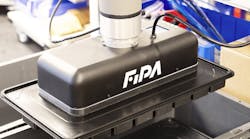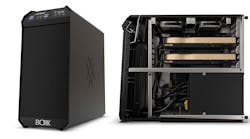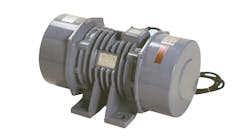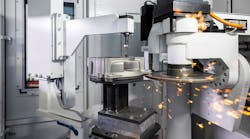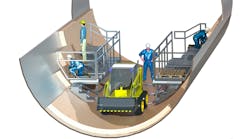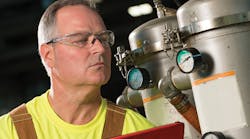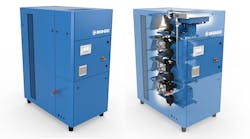Before we settle into a 2007 routine it's worth reflecting on the month, and year, just behind us. It may be a while before the metalcasting industry sees another month like December 2006, a month during which foundries and diecasters must have come to realize they are loved by the financial community. Traditionally, business in December is a rush job — get it done and get out of town, or at least get home. Not so in 2006. In metalcasting, it was time to buy. Or sell. In any case, it was time to invest.
Just in case you missed it all the action: Georg Fischer AG bought E.D.C. Inc.; Estatia A.G. acquired Meridian Technologies Inc.; Precision Castparts Corp. agreed to buy GSC Foundries Inc.; Bradken Operations Pty. Ltd. bought two foundries from Firth Rixson Ltd.; Great Lakes Casting was acquired by Republic Financial Corp.; ESCO Corp. sold its Integrated Manufacturing group to Platinum Equity, explaining its plan to focus resources on its core casting business units; and Monomoy Capital Partners acquired and recapitalized Magnesium Aluminum Corp.
All this is indicative of trends — positive trends — at work in metalcasting throughout the past year. In the previous month we had seen Nemak expand its global organization with selected purchases from the TK Aluminium and Hydro Aluminium holdings, as well as the sale of AmeriCast Technologies Inc. to new investors. All through 2006 there nearly weekly reports of smaller and mid-sized metalcasting operations and organizations being acquired by "private equity" groups, while larger, more recognizable ones reconfigured their holdings, geographically or strategically. And, it's good news.
I don't discount the anxiety that courses through organizations when ownership changes. And, I don't dispute the personal difficulties that happen every day as careers are changed by such developments.
The good news for the metalcasting industry is the underlying message: when money moves in waves like this it means that smart investors want to be in a certain business, and they're willing to pay to do it.
It means those investors have a vision for the future of that industry — a vision, in this case, already being implemented by the more successful organizations. For Georg Fischer and Nemak, among others, the vision is of high-tech, customer-focused, and most important, global organizations that maximize the value of their engineering and manufacturing achievements.
In fact, even if these investors are not "committed" to this vision of the metalcasting industry, neither (we must assume) are they committed to losing their investments. Perhaps they're just holding on to their purchase until another good offer comes along — as seems to have happened in some of the sales during 2006. That's all right, too, because if they want a good return on their investment they cannot let their holding languish without upgrades, improvements, optimizations, and so forth. To no surprise, that sort of information — equipment purchases, technical advances, product developments — is also filling the financial news.
Which makes this year's Foundry Management & Technology Data Book somewhat timely.
Every January in our Data Book issue we aim to present a compendium of new and relevant ideas about the full range of metalcasting process technologies. We compile it so readers will have an insight into the changes and developments in their industry. Some of it will be news to you, some of it may inform you, and some of it may intrigue you to seek more information. I hope all of it will convince you of the vast range of research, effort, and investment that keeps metalcasting progressive.
Reading through the contributors' essays in advance of this issue, I was struck by how many started with a common theme: "Traditionally, the XYZ process in metalcasting has … ." Now, it's a small thing — and, obviously, our contributors are responding to the invitation we made. But, even so, it's revealing that each of them is putting forward an argument that builds from a standard premise: the old way of doing things — and a right way. They're making a broad argument about moving forward. Which is the only way to go.
